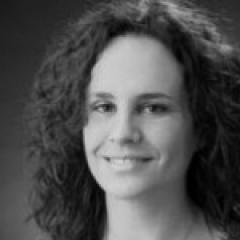Teaching/Math/Culture: Choice Systems and False Agency
I have been reeling for the past few months at the startling erosion of some of the taken-as-shared narratives about public education as the backbone of democracy. I realize that these often came as platitudes and, worse, double-speak, but as long as there was some semblance of a shared commitment for high quality public education, I felt I had something to work with.
The current U.S. Secretary of Education has taken astonishingly hateful positions on protecting students’ civil rights in her valorization of “choice” and “states rights.” Our shameful history of Jim Crow has established latter as a well-known cover for government-sponsored racism. But I want to poke a few holes in “choice” as well.
The following text comes from a paper I published in 2004 in a study of a high school that allowed students “choice” about whether to take a traditional or reform math curriculum. I have edited it for this post.
The traditional US high school curriculum has famously been compared to the stores of a shopping mall, with a broad array of educational choices that provide something for everyone. In making choices, students are asserting a sense of themselves, the kind of socially-rooted self-understandings and social positions that constitute identities. Indeed, by the time students are in high school, because these understandings and positions may have been reinforced by an array of social and interpersonal forces, personal choice may be less of a choice than it seems: by labeling it as such, choice systems effectively erase the social categories that have been associated with different kinds of school curricula.
In the case of mathematics, different courses are often associated with different types of students. Teachers’ talk about courses reveals their notions of students and mathematical ability, and these ideas get built into the organization of the curriculum. For instance, when teachers are mandated to eliminate remedial courses but feel the need to accommodate “slow” or “lazy” students, they may effectively workaround the mandate and create separate tracks for these students. Students, likewise, may occupy the curricular space of a school in ways that are similar to the ways they occupy physical spaces: they gravitate to places of comfort, where their social identities find company among cohorts of similar peers.
It is not surprising then that one of the most robust findings in studies of relationships between curricular organization and student achievement is that a rigorous common curriculum ––– which minimizes such choices on the part of students –– distributes achievement more equitably (Lee, Bryk, & Smith, 1994). A narrow academic curriculum coupled with a strong organizational push for students to enroll in challenging courses leads to more equitable learning in mathematics (Lee, Smith & Croninger, 1997), with students from groups historically disenfranchised from schooling being especially advantaged by such structures (Lee, Bryk, & Smith, 1993). This research signals the kinds of curricular organization that correlates to higher achievement, giving us a broad look at what seems to matter.
When students make “choices” about courses, this narrative represent a false sense of agency and autonomy. More accurately, choices reflect their assertions (or assignments by parents, counselors, or others who advise in these decisions) of identity: an “honors” student, a “pre-algebra” student. Choice, as a force that propels students through the curriculum, is problematic: the supposed self-determination of course-selection is actually a mechanism for perpetuation of the status quo. By narrowing the array of courses, the social meaning of courses must correspondingly broaden. Rigorous academic courses are no longer the province of some students to the exclusion of others; they must expand to become habitable places for all students.
The same can be said for taking the logic of choice to a district level, only worse. Not only will “choice” provide a false narrative of agency and autonomy, these systems will thrive on families with insider information. I see it in my own children’s education, where parents wonder at each transition from elementary to middle school to high school, how to navigate the system. Choice systems privilege parents with resources, such as access to insider knowledge and flexibility to drive children around town.
Good public schools matter. Providing all children access to a high quality education matters. When I hear choice, I hear opportunity hoarding and re-segregation.
I cannot stand by silently while we gut our best tools for democracy.
This blog post has been shared by permission from the author.
Readers wishing to comment on the content are encouraged to do so via the link to the original post.
Find the original post here:
The views expressed by the blogger are not necessarily those of NEPC.
